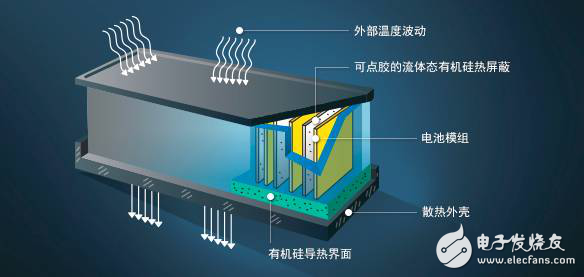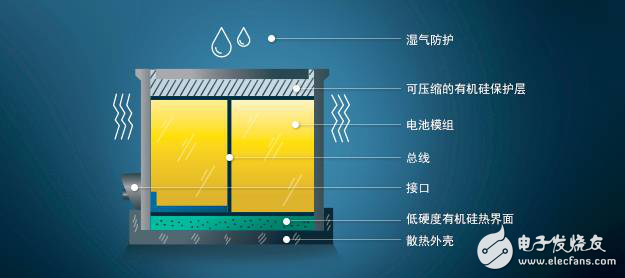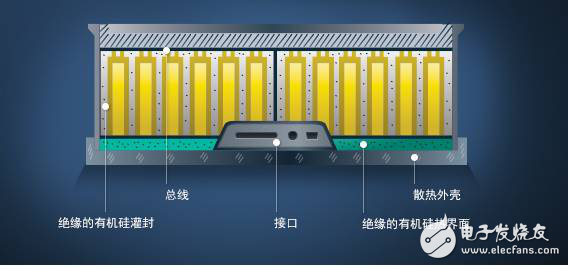The hot pre-sale of Tesla model 3 has once again focused on new energy vehicles. The significance of the lithium battery industry lies in the new power battery materials it uses. According to the introduction, Model 3 battery technology uses a silicon-carbon negative electrode, the energy density will reach 300 wh / kg, and the cruising range is about 346 kilometers. The improvement of the cruising range is due to the fact that the specific capacity of the silicon material is much larger than that of the graphite material, and the specific capacity value directly reflects the power of the unit weight battery.

The theoretical gram capacity of the graphite anode material currently used on the market is 372 mAh/g, and the theoretical gram capacity of the silicon-carbon composite material is about 4200 mAh/g, which is more than 10 times higher than that of the graphite anode. The high capacity of the silicon carbon anode material can fully meet the energy requirements of the pure power vehicle power battery, but the charge and discharge process of the silicon-based lithium ion battery generates a huge volume expansion effect of the material, making it difficult to industrialize. The application of silicon carbon anode in Model 3 battery technology is an important breakthrough in the industrialization of silicon carbon anode materials. According to reports, the anode material is added with 10% silicon, and the energy density reaches 300 wh/kg. With the advancement of technology, the silicon carbon anode material is expected to further increase the capacity of the lithium battery. Inorganic silicon materials (silicon or silicon oxide used in the negative electrode) make a significant contribution to the capacity of lithium batteries. So, another important member of silicon materials, silicone materials with excellent performance, can also help new energy vehicles to last?
The silicone has a Si-O bond as a main chain structure, and the side chain is connected to various other organic groups through a silicon atom. The bond energy of the Si-O bond in the silicone is much larger than the bond energy of the C-C bond, so the thermal stability of the silicone product is high, and the chemical bond of the molecule at high temperature (or radiation irradiation) does not break or decompose. It is resistant to high and low temperatures and can be used over a wide temperature range. At the same time, there is no double bond in the main chain, which is not easily decomposed by ultraviolet light and ozone. The special composition and molecular structure make the silicone integrate the functions of organic matter and inorganic matter, and have excellent high and low temperature resistance, weather resistance, electrical insulation and biocompatibility. Silicone materials have been widely used in civil engineering, electrical and electronic, chemical and other civil applications, and even in aviation, cutting-edge technology, military technology departments and other fields. For example, it can be used in extreme outer space or in extremely cold, extremely hot Siberia or Sahara.
temperature control
The carbonate in the lithium battery electrolyte has a high melting point. Generally, when the temperature is lower than -20 ° C, the battery can not work normally; when the temperature is too high, the battery separator will melt to cause a short circuit and cause a fire problem such as a battery fire. Only by maintaining a suitable temperature can the battery achieve its optimum performance. Dow Corning's custom silicone materials can effectively dissipate heat from battery packs and cells, improving battery operating temperatures. At the same time, the fluidizable silicone can be dispensed into a heat shield around the cell in the battery pack. When the environment is too cold or too hot, the battery can still operate efficiently.

Durability
During the daily use of new energy vehicles, moisture can cause lithium hexafluorophosphate to decompose in the battery to produce HF. The vibration may cause breakage of the ear and the short circuit of the battery. These most common factors may affect the battery life. In this regard, Dow Corning offers a "battery pack-specific customization" solution for the silicone solution to protect the durability of the battery.

Insulation
Another challenge facing electric vehicle batteries is short-circuit and over-current, and the insulation of silicone materials is just right for this problem. The use of silicone in batteries protects critical internal electronics, cells and busbars, thereby avoiding the risk of power surges and battery fires.

As a power source for new energy vehicles, batteries, besides the battery materials such as cathode materials, anode materials, separators, and electrolytes, affect the performance of the battery. The temperature changes, vibration, moisture, etc. of the new energy vehicles will also change the battery performance. Affect its endurance. Scientists have made a lot of explorations on the application of silicones in new energy vehicles. As a leader in the silicone industry, Dow Corning has proposed a farther material solution for new energy vehicles.
Radiators, essential yes, but sometimes they`re pretty ugly. I can say this from personal experience, as a discoloured radiator sits in my hallway bringing down the decor. Faced with the option of replacing it at great cost, I`m now thinking a splash of paint might be the better option.
That theory is backed up by seeing this bold painted radiator transformation!
Painted Radiator,Finned Painted Radiator,Distribution Finned Painted Radiator,Painted Transformer Cooling Radiator
Shenyang Tiantong Electricity Co., Ltd. , https://www.ttradiator.com